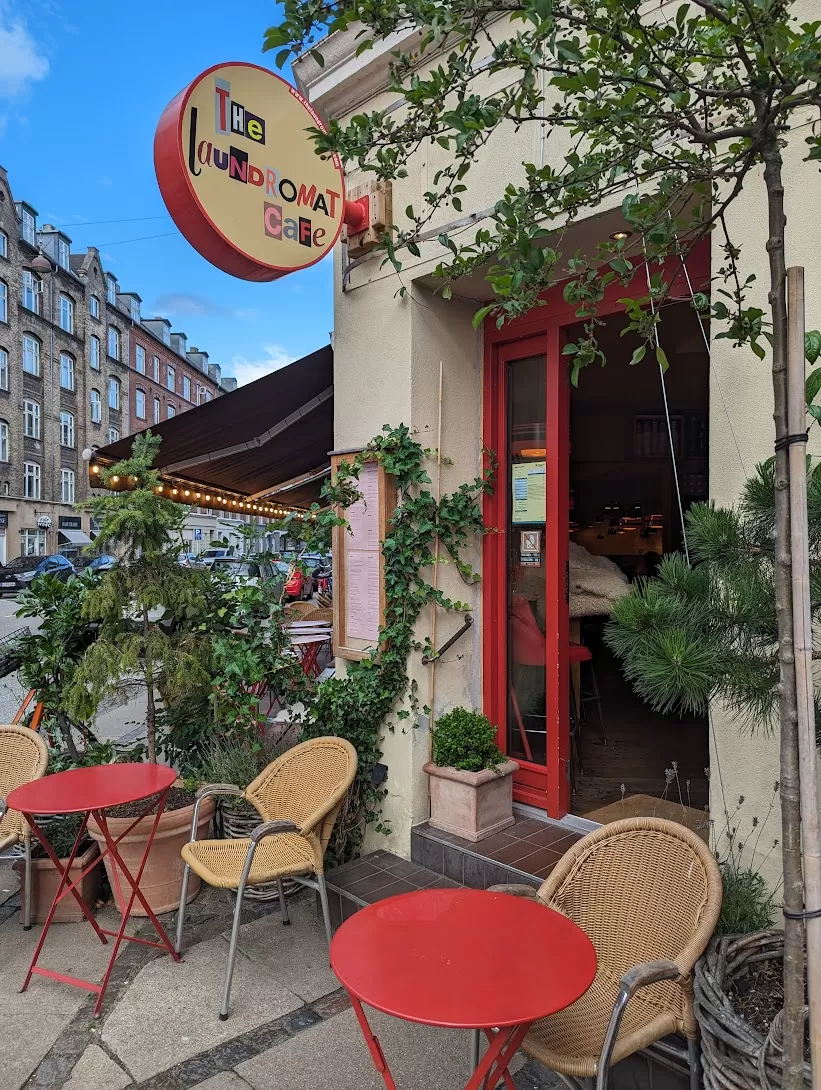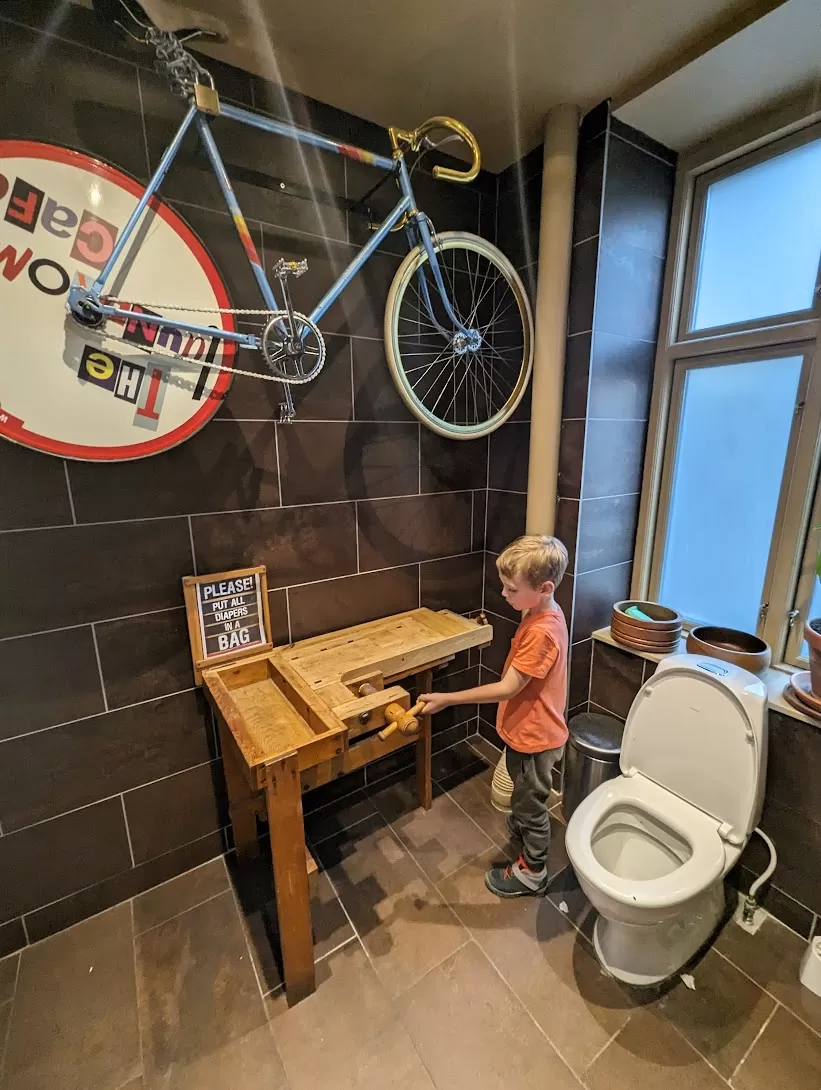This is the fourth in a series of blog posts documenting our 2023 summer holiday: a wonderful road-trip around Denmark, Sweden and Norway.
Day 4: July 27, 2023
The Experimentarium
A core memory of mine (to use Inside Out speak) is the one or two occasions spent in the basement of the Science Museum playing with all sorts of amazing interactive exhibits. It’s planted deep in my mind this idea of the Science Museum as a fun and interactive place where you not only see exhibits but touch and feel science as well. Having returned to the Science Museum with both Ezra and Eleanor in more recent times it doesn’t have the same sense of magic (for me, not them)1.
But Copenhagen’s Experimentarium does. Originally something we had intended to cover with the cost of the Copenhagen Card part of our decision to buy the tickets individually was our use of the hire car to travel around Copenhagen and get out to this museum rather than using public transport (parking cost us about £8 for the day). And it was another highlight (every day has been a highlight so is that idea getting devalued?)
For the family it cost us 776 DKK for entry and made me pause to think about how my expectation of some of the most famous British attractions is for them to be free (and full of requests for donations). When I go to the Science Museum or the Natural History Museum it is fantastic to find that they are free of charge (we do have paid for membership of the Natural History Museum). However, charging entrance is obviously a factor in how the Experimentarium to refresh and reimagine and invest in the experience they offer in a way that was refreshing and impressive.
The Experimentarium is everything I want The Science Museum to be.

We started off learning about physics in a series of different exhibits. First, a construction site that had them wrestling with forces and grappling with gravity.
Then we had a good play with bubbles.
And then we played around with motion and momentum.
I doubt the kids retained much of the science that was underpinning these fun exercises but they were so engaged throughout the morning and I was, honestly, in my element.
Weird lunch
After a full morning of different zones we headed to the cafe for our dinner (on which we spent about £20). It was a fairly classic cafe experience except for a particularly special item on the menu: the black hot. A black sausage, in a black bun “with green remo and onions in gold”. Sounds odd and definitely was strange to take a bite from but only because of the mismatch between vision and flavour. It really was just an ordinary hot dog.
How does global trade work?
After lunch we headed to the roof of the Experimentarium where there were further zones and themed areas. A huge and sudden downpour left us running for shelter and unable to get back into the main museum until it passed.
But when it did we headed to a zone that I’d been eyeing up since we first walked past it. We’d seen this hive of activity with lots of balls passing along tracks and children running around. It was very intriguing.

It turned out to be a recreation of the global trade system and invited us to “move the balls from Denmark to Asia”. A big chunk of Denmark’s economy relies on its role in trading with the whole world and its contribution to the logistics industry.
The whole exhibit was a giant model of the world, with the balls representing the goods that are constantly on the move. This means that you can dive into the experience at any point in the supply chain.
In theory it was pretty straightforward:
- Some people needed to create a delivery of goods in either Denmark (blue balls and blue structures) or Asia (orange balls and orange structures) and choose the mode of transport (this was done via touchscreen because it had an impact on time and carbon footprint)
- Others needed to be transport workers and sailors making sure that the balls crossed the ocean (if travelling by boat) or were distributed through the right channels if they weren’t
- There was also a role for people to handle the goods along the way to make sure they got quickly and safely to the right destination.
The touchscreens were brilliant and set little challenges to the children in terms of making sure the right things went to the right places and all of that was linked to a big screen in the middle of the ocean where it was possible to follow the life of the miniature world.
I say in theory because in practice it was complete chaos and balls were flying around everywhere. I particularly enjoyed the moment that one little girl started to stockpile tankers and balls in the middle of the ocean, bringing the entire global economy to a halt. The perfect illustration of the impact which the Ever Given had on the world was lost on most people! Eleanor loved moving the balls around but Ezra was trying to organise people to make sure the system functioned properly (without much success it has to be said). We spent a long time chasing those balls around the world.
Eating at the Laundry
For our tea we’d found out about the Laundromat Cafe which is as it sounds – a cafe that is also a laundry. When we arrived a couple were doing their washing in the (unphotographed) washing machines.




This definitely felt a bit pricey. We weren’t sure if we’d been drawn in by the child friendly nature of somewhere that was in fact playing to the tourist market, or whether this was us coming face to face with the reality of normal dining out in Copenhagen but a fairly simple tea cost more than £60. It was tasty fayre and we didn’t begrudge it considering how well it did cater for the children and the novelty of the surroundings. I don’t think we’d rush to go back though.
After having our savoury course we needed something sweet. Fortunately we had been recommended to Isoteket, an ice cream parlour that did fantastic artisan ice cream (obviously this was not cheap either) and the ice cream did not disappoint. It is traditional Italian gelato but with a completely unique selection of flavours that included Lemon Poppy Seed, Licorice Lemon Curd, Blackberry Coconut, and Pineapple Mint amongst others. We loved it.




We also loved the fantastic playground at Århus Plads. Such a brilliantly inventive take on the sort of climbing frames and activities that children will enjoy. A nice departure from the predictable metal/plastic playground equipment that tends to be what you can expect when it comes to a British playground.
Needless to say it was difficult to extract the kids from this, even though we’d had another full day. But we had an early start in the morning because we were saying goodbye to Copenhagen, and Denmark, and we were off to the next leg of our adventure.
- Grown up me does enjoy the standing exhibits…even if ‘science’ sometimes feels like it’s a little stuck in a particular era and needs a quite fundamental and wholesale reimagining of where the world is now. ↩︎